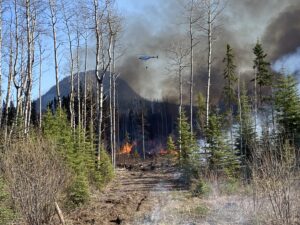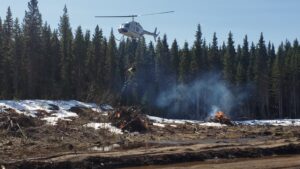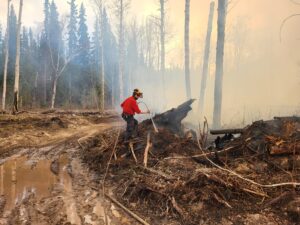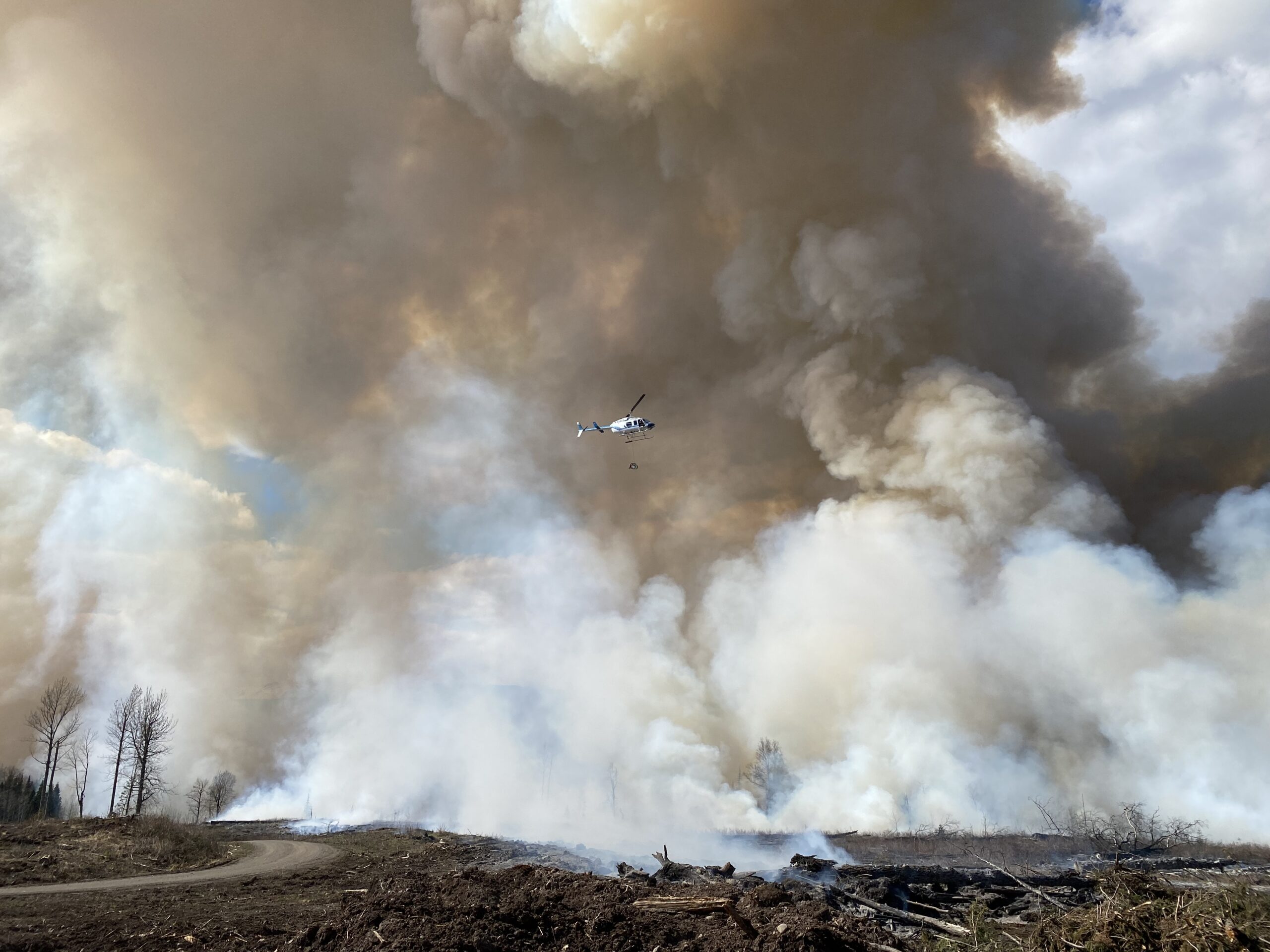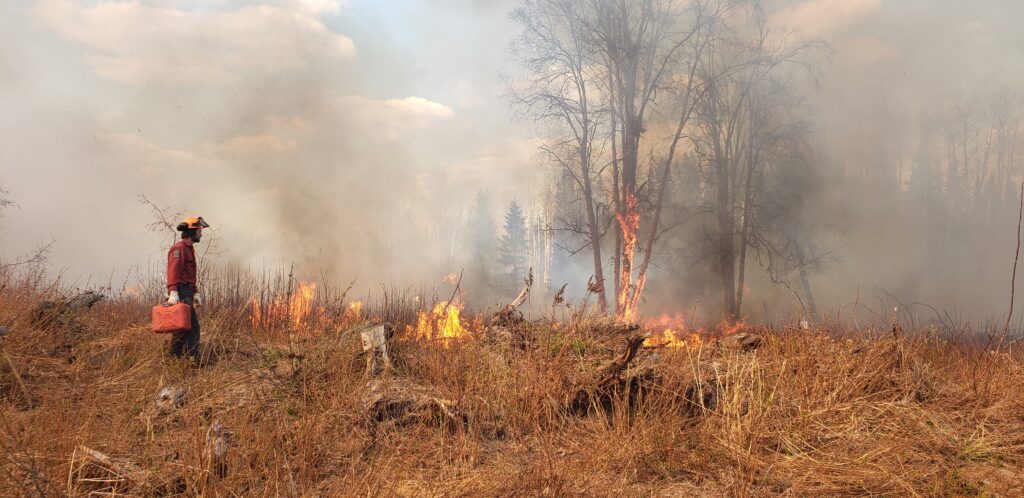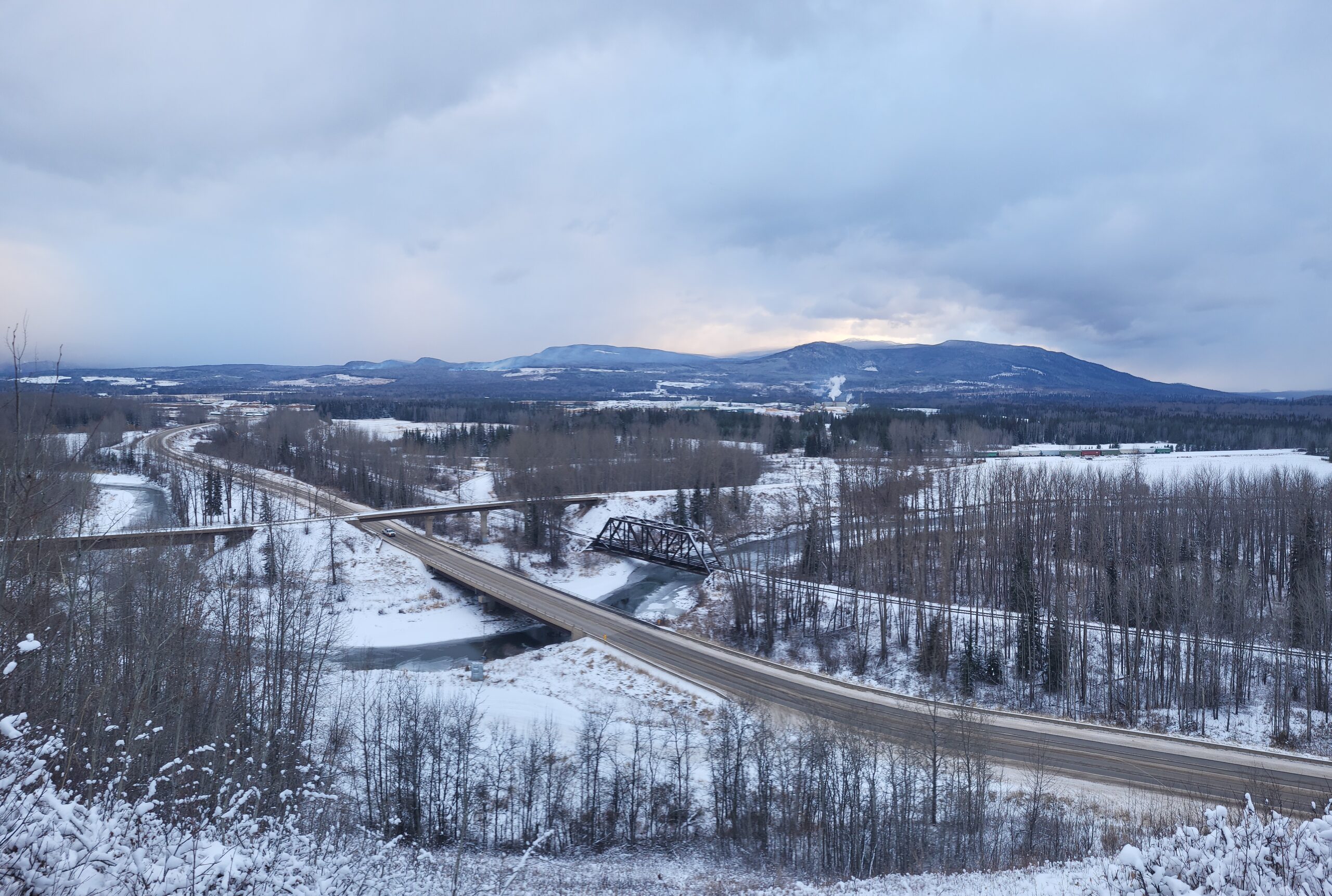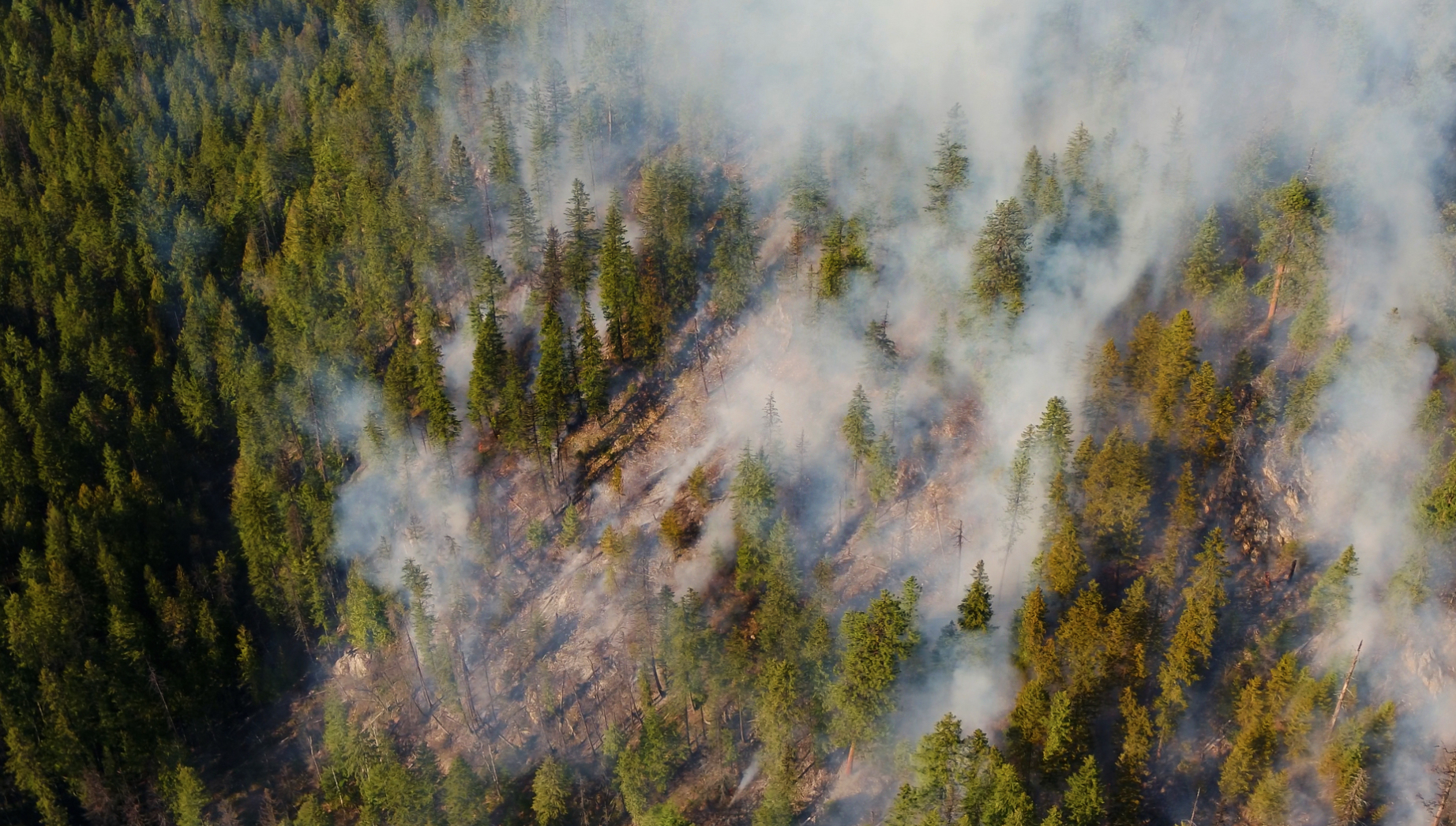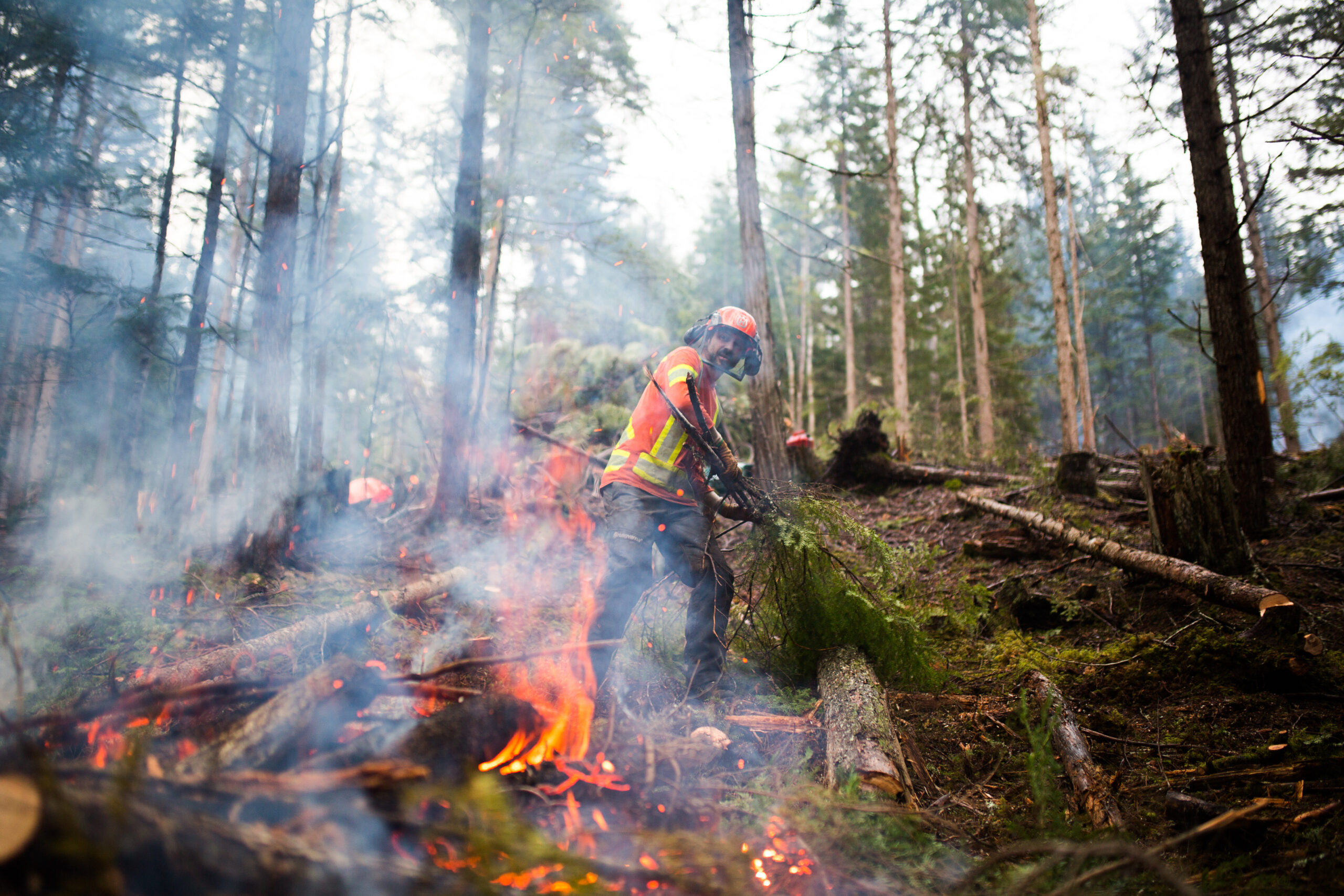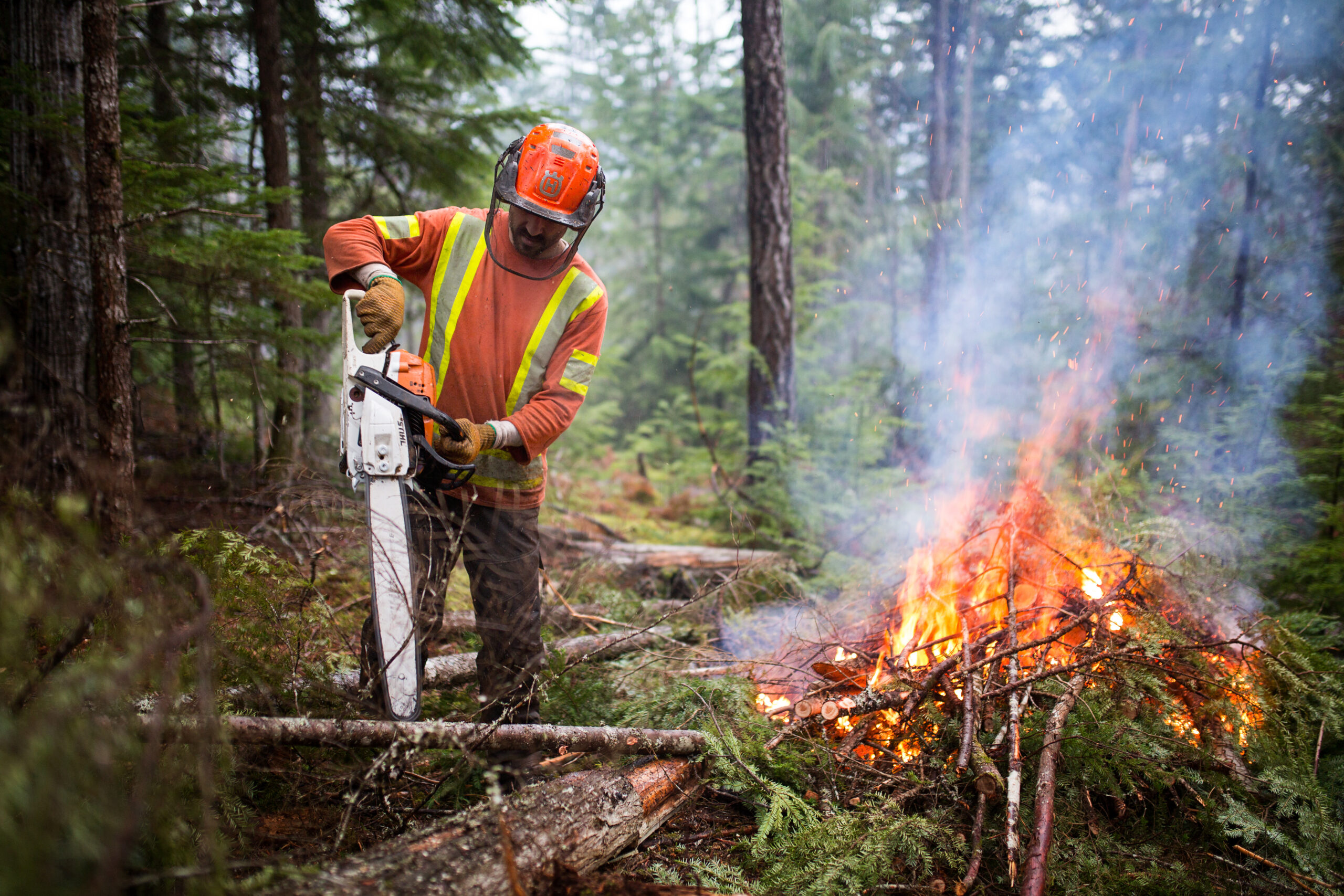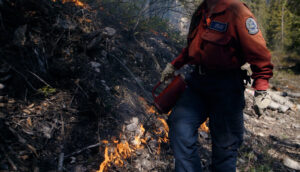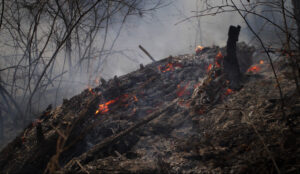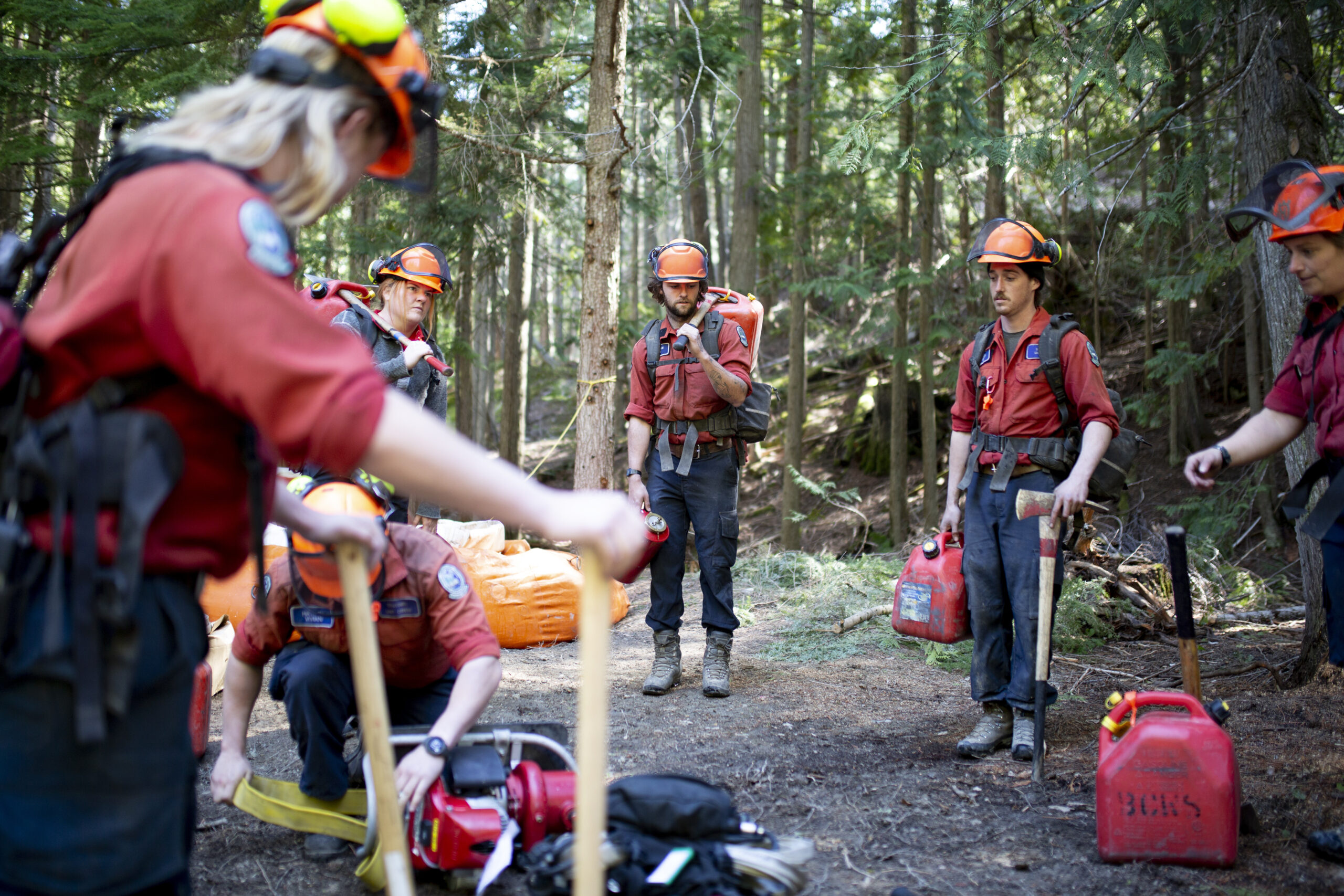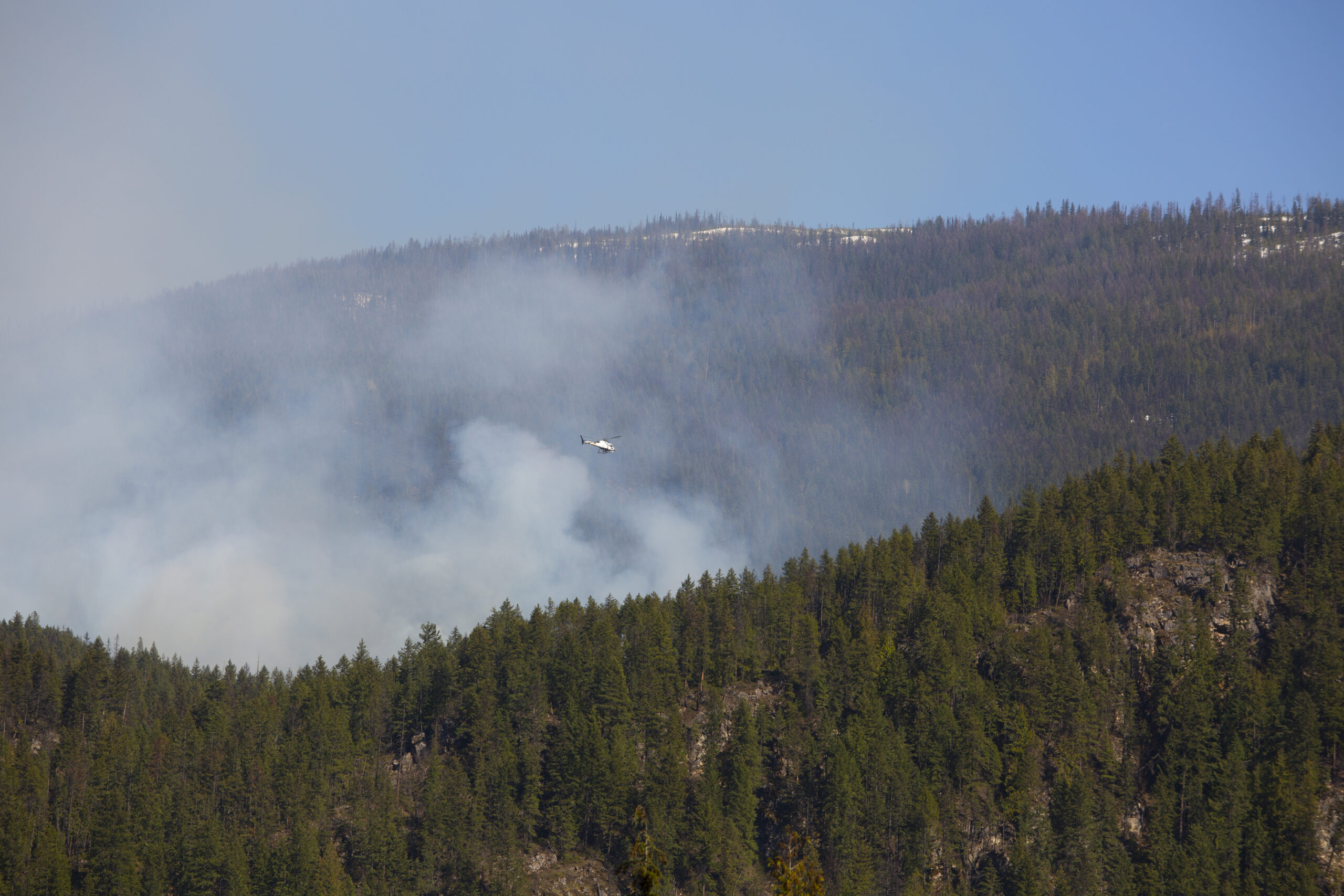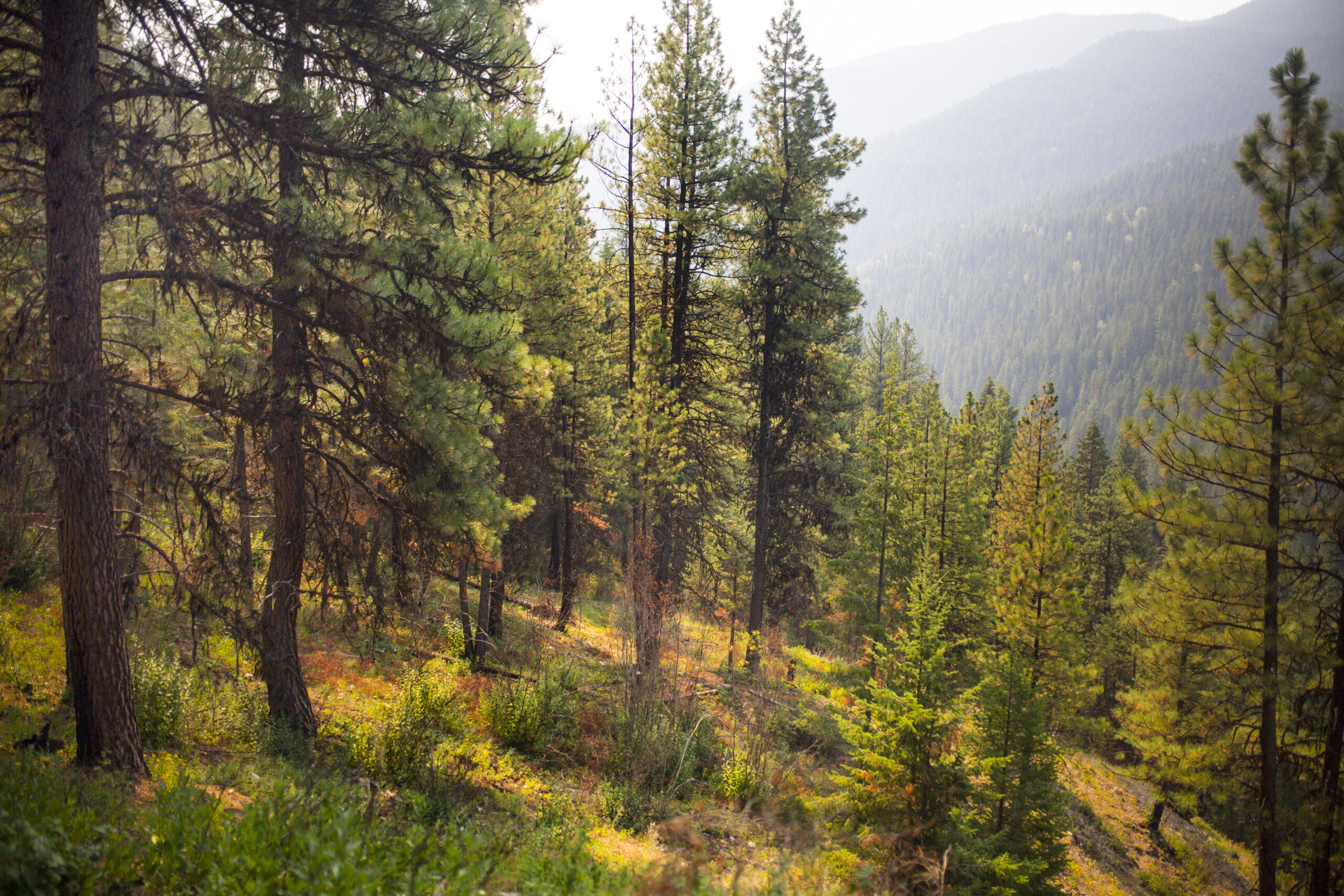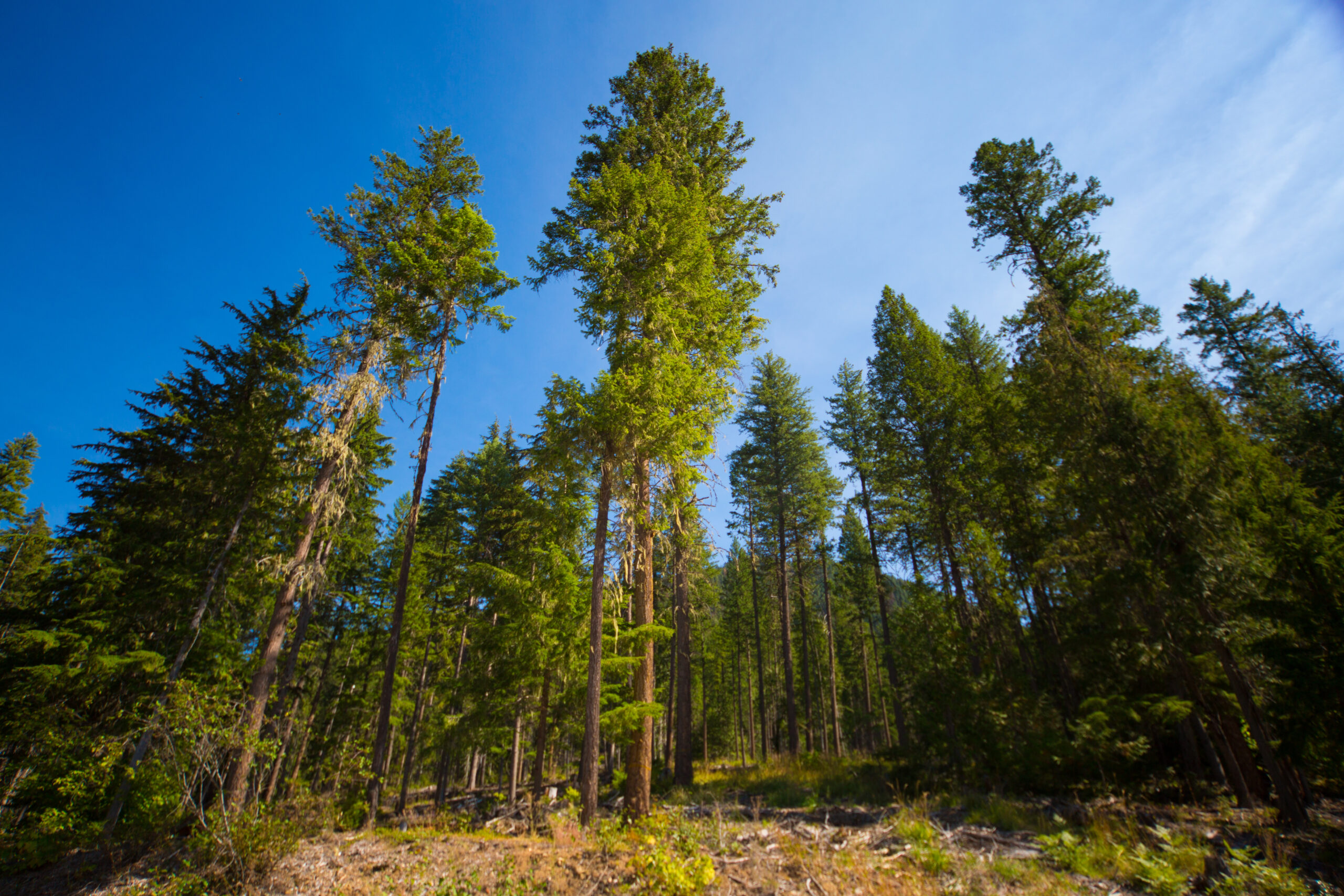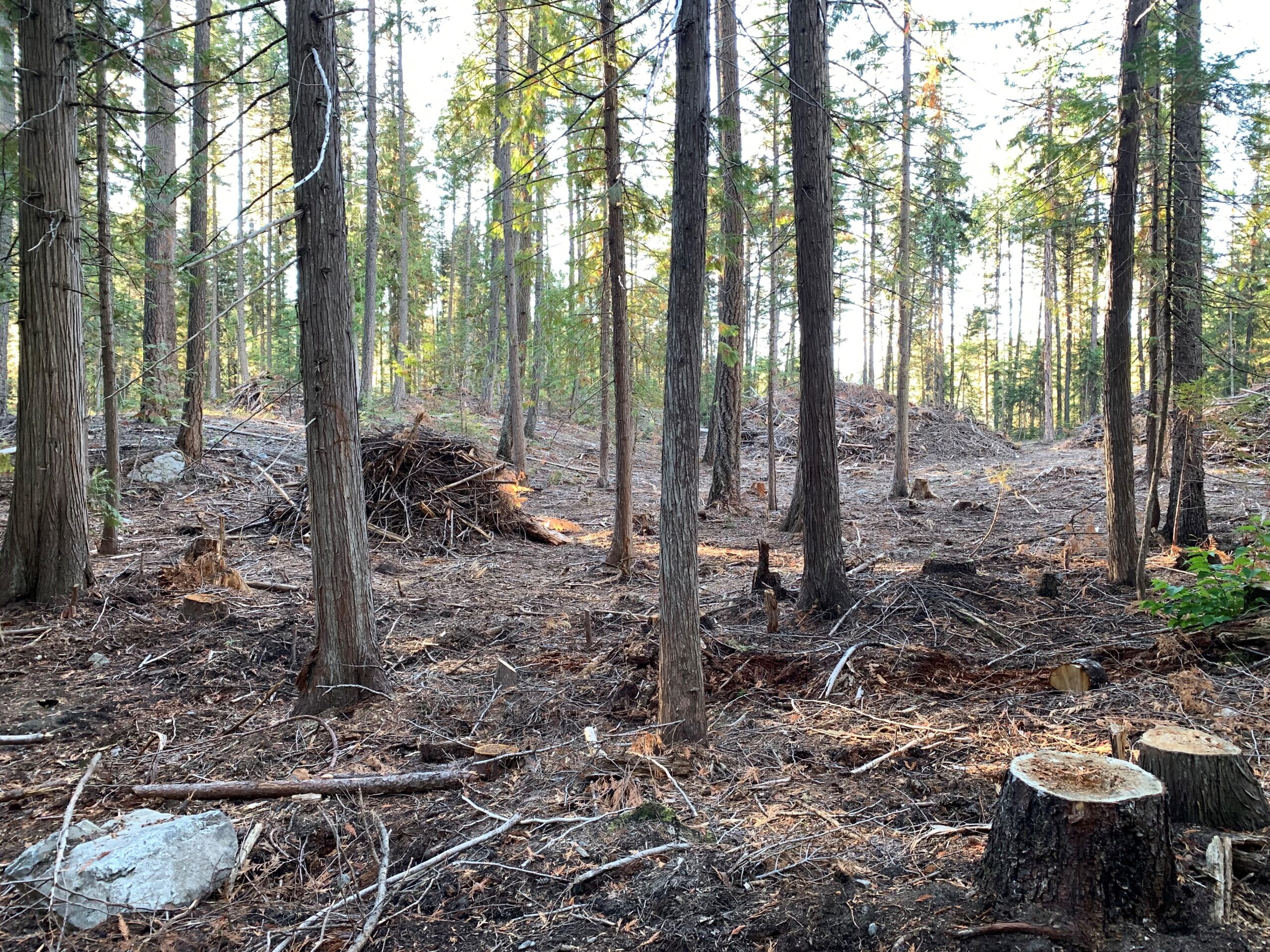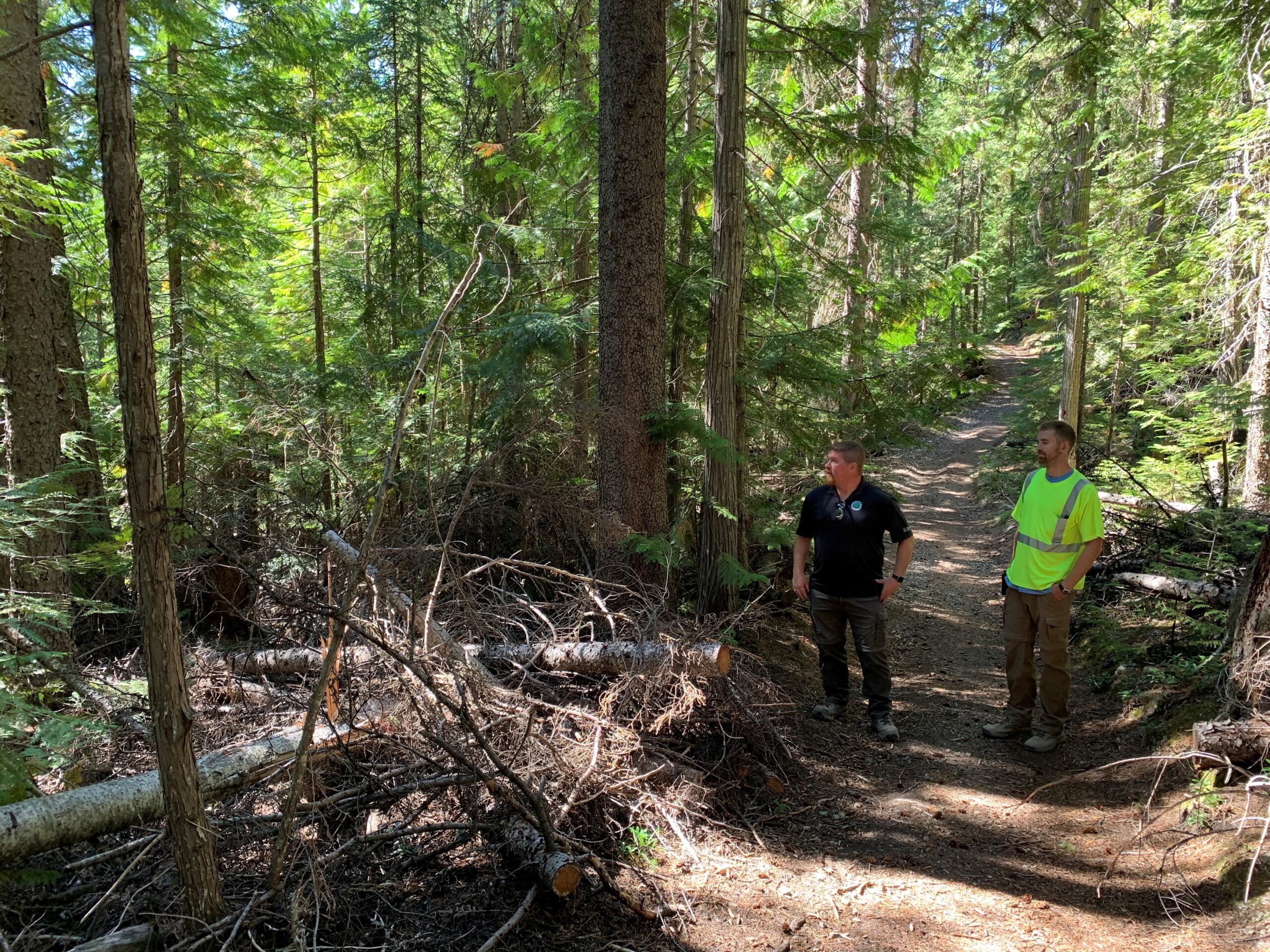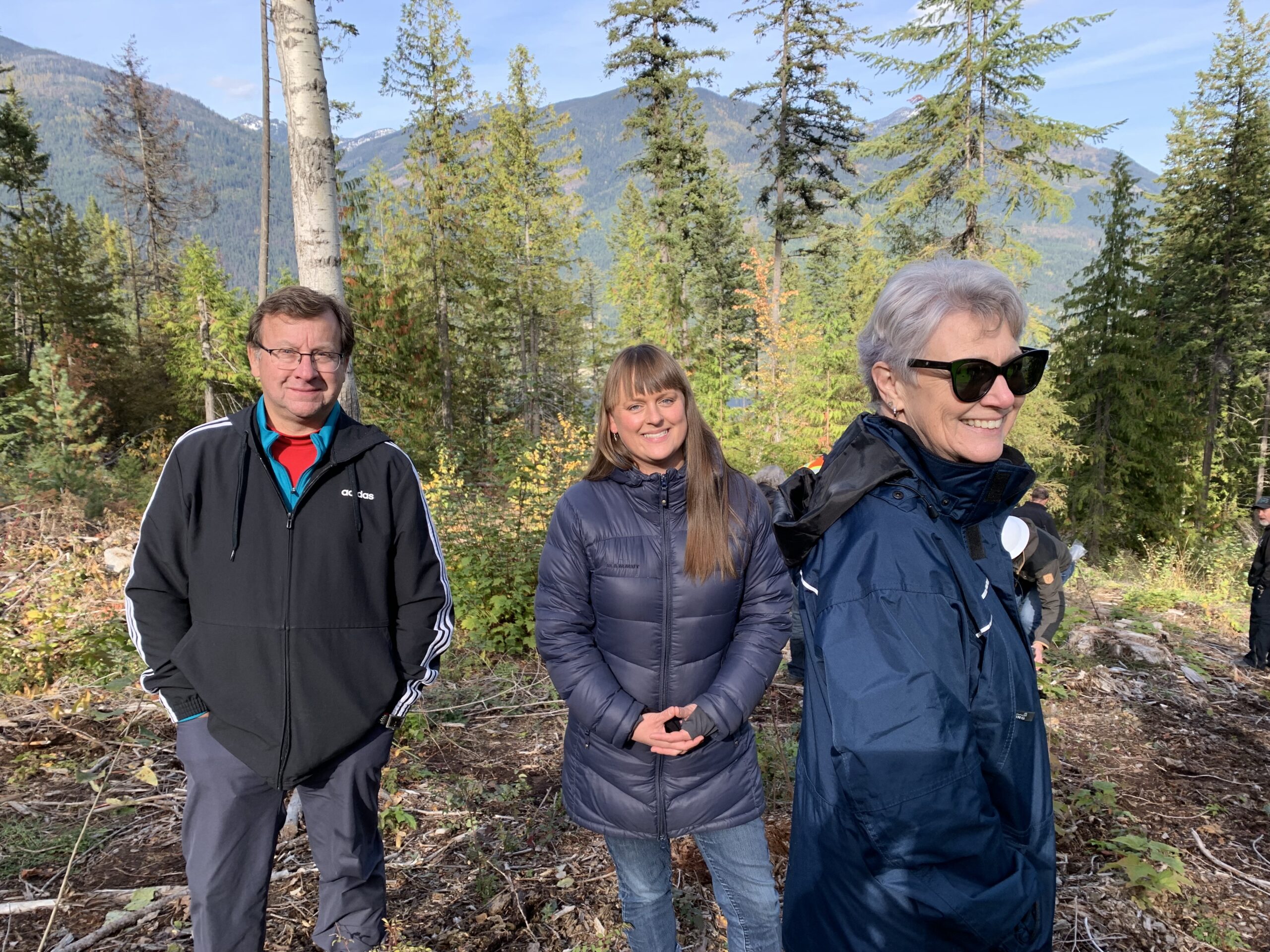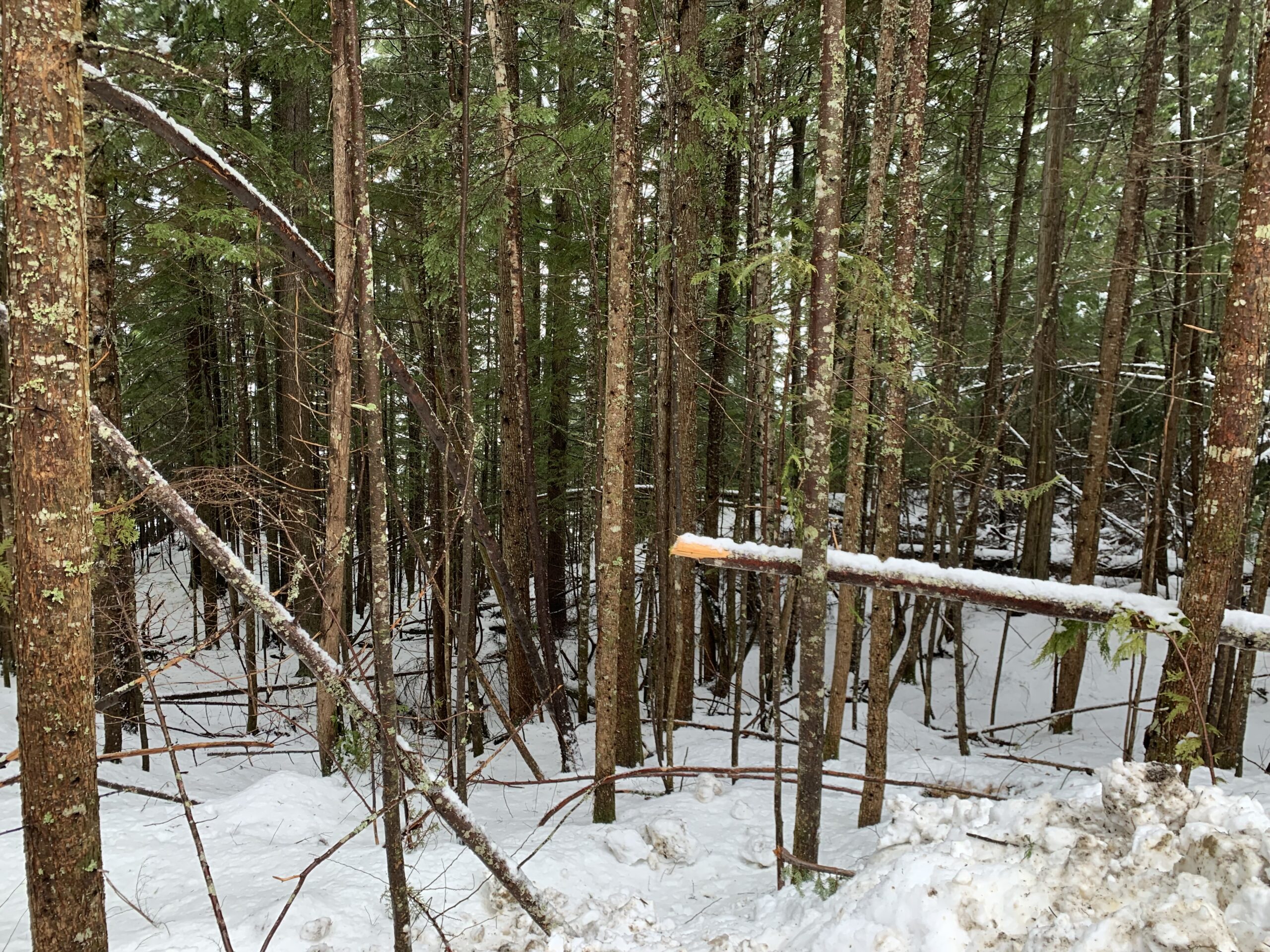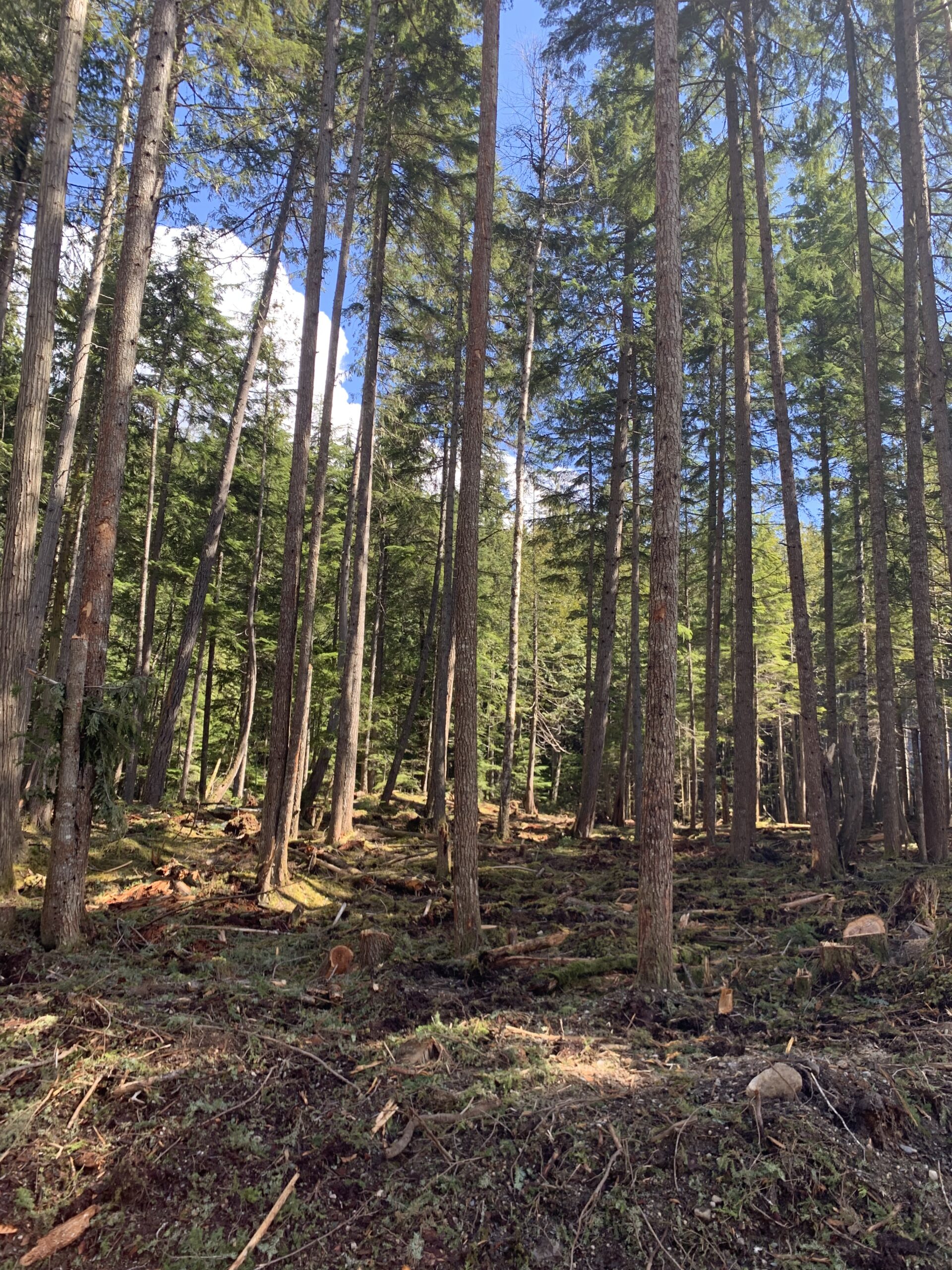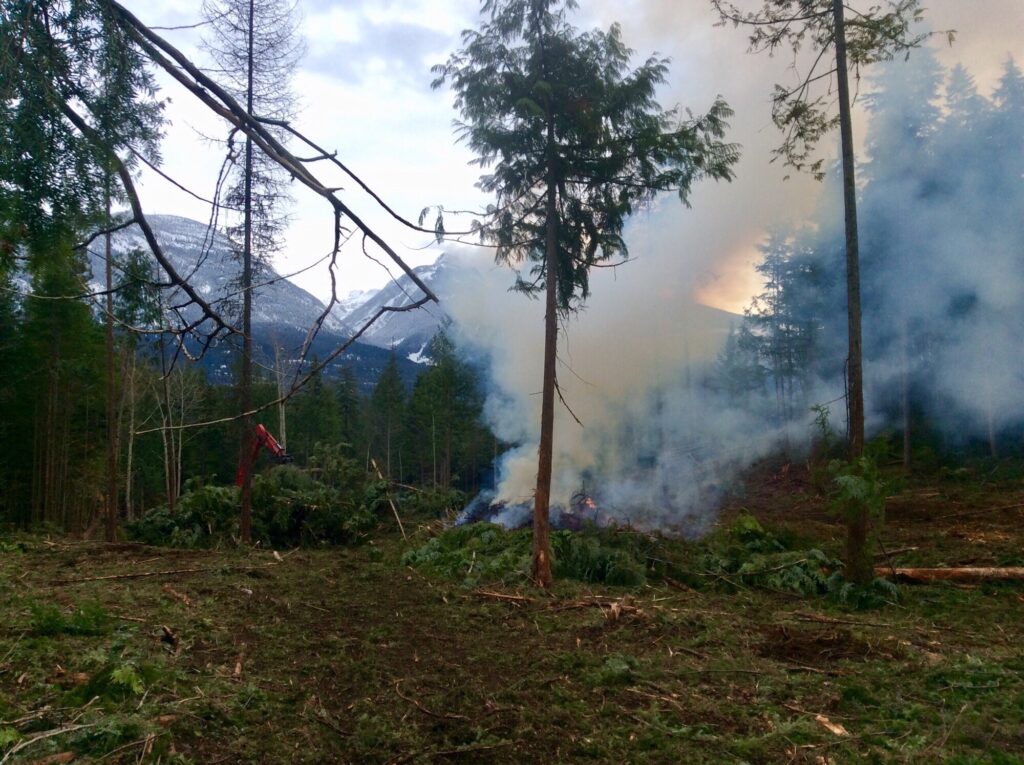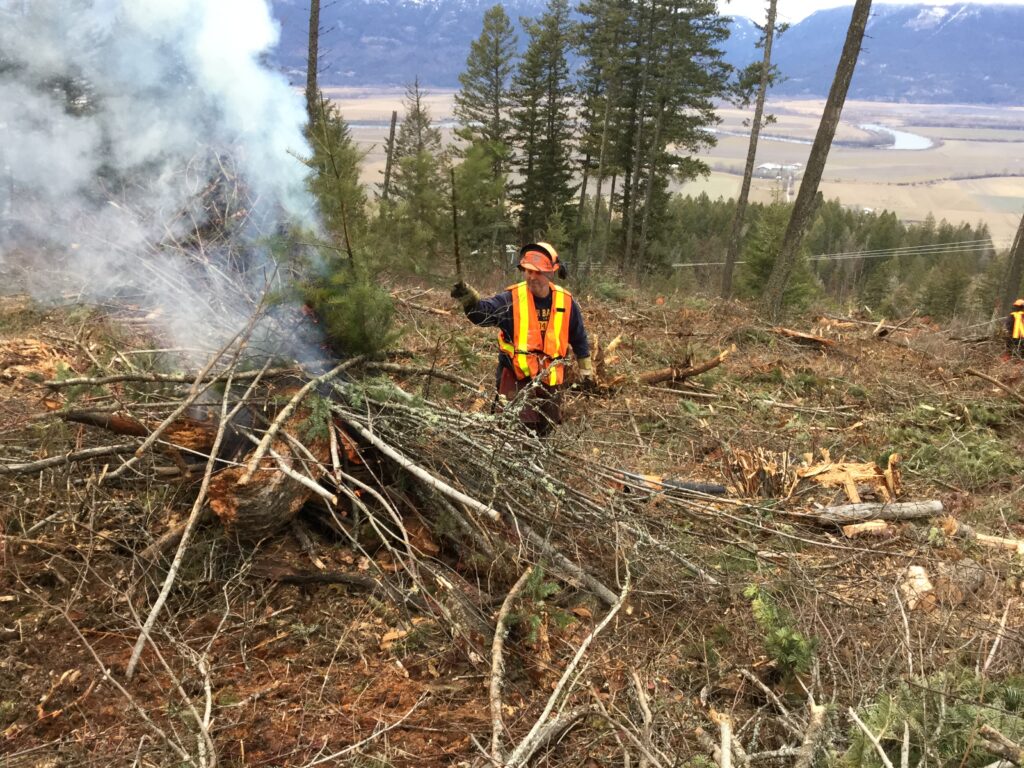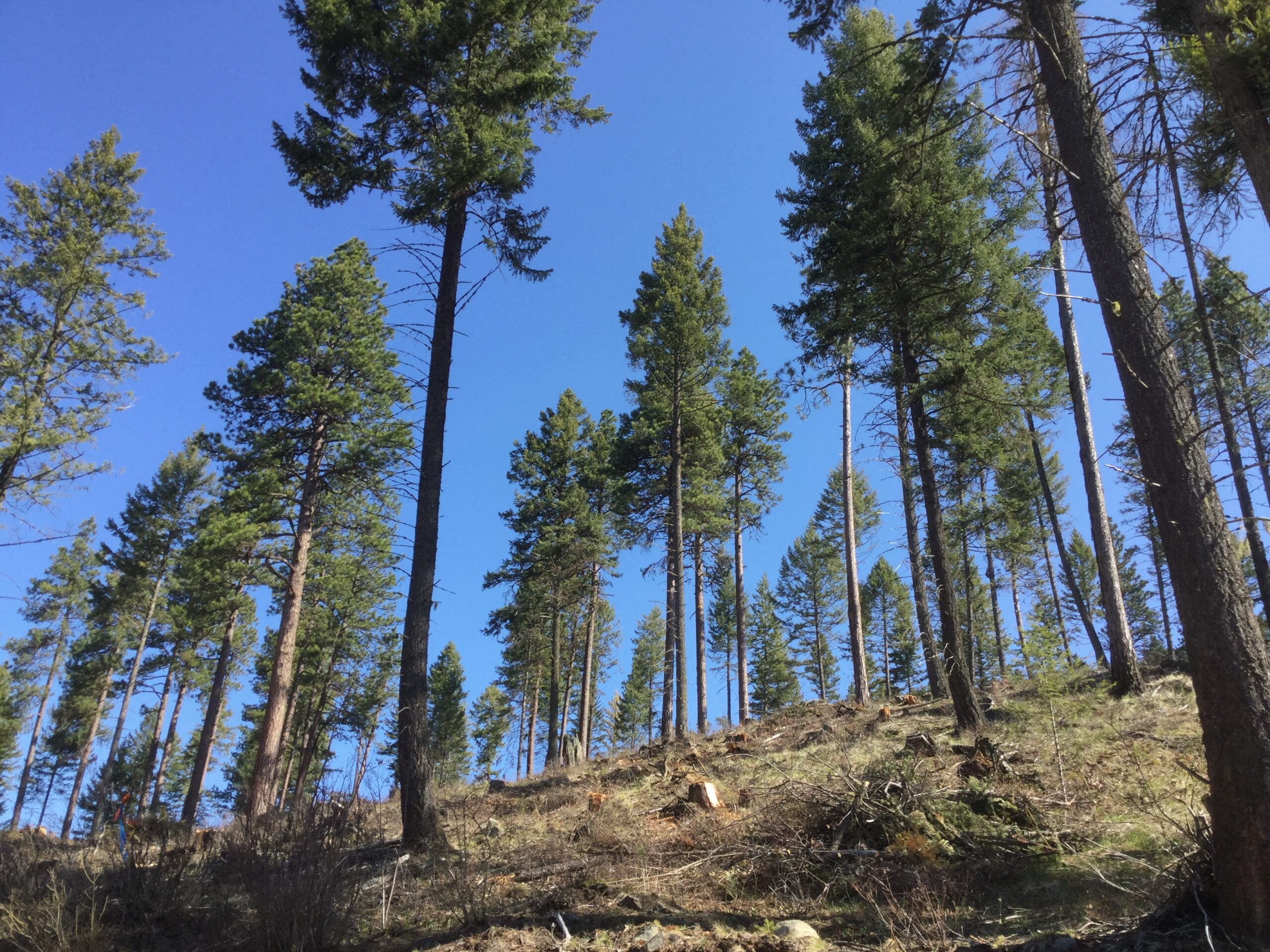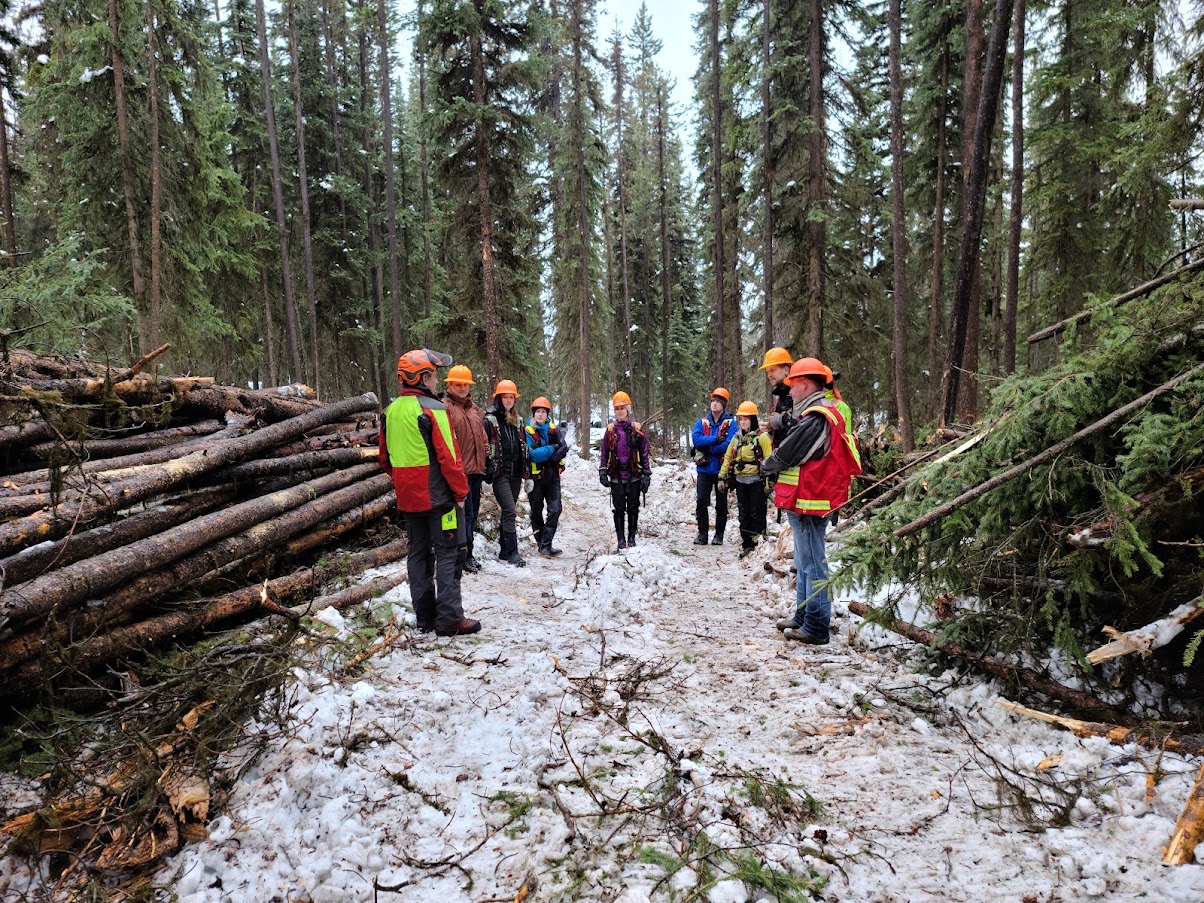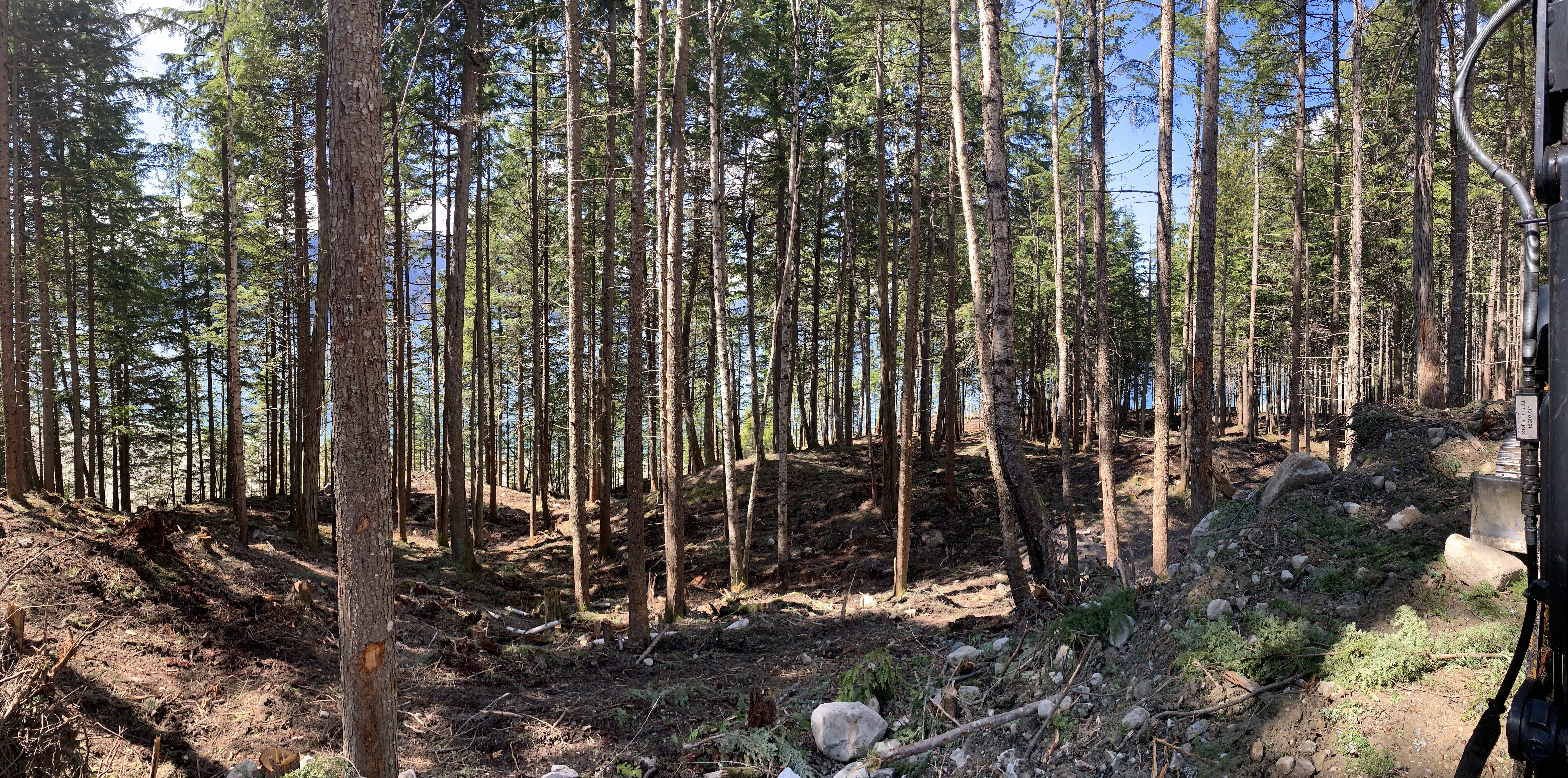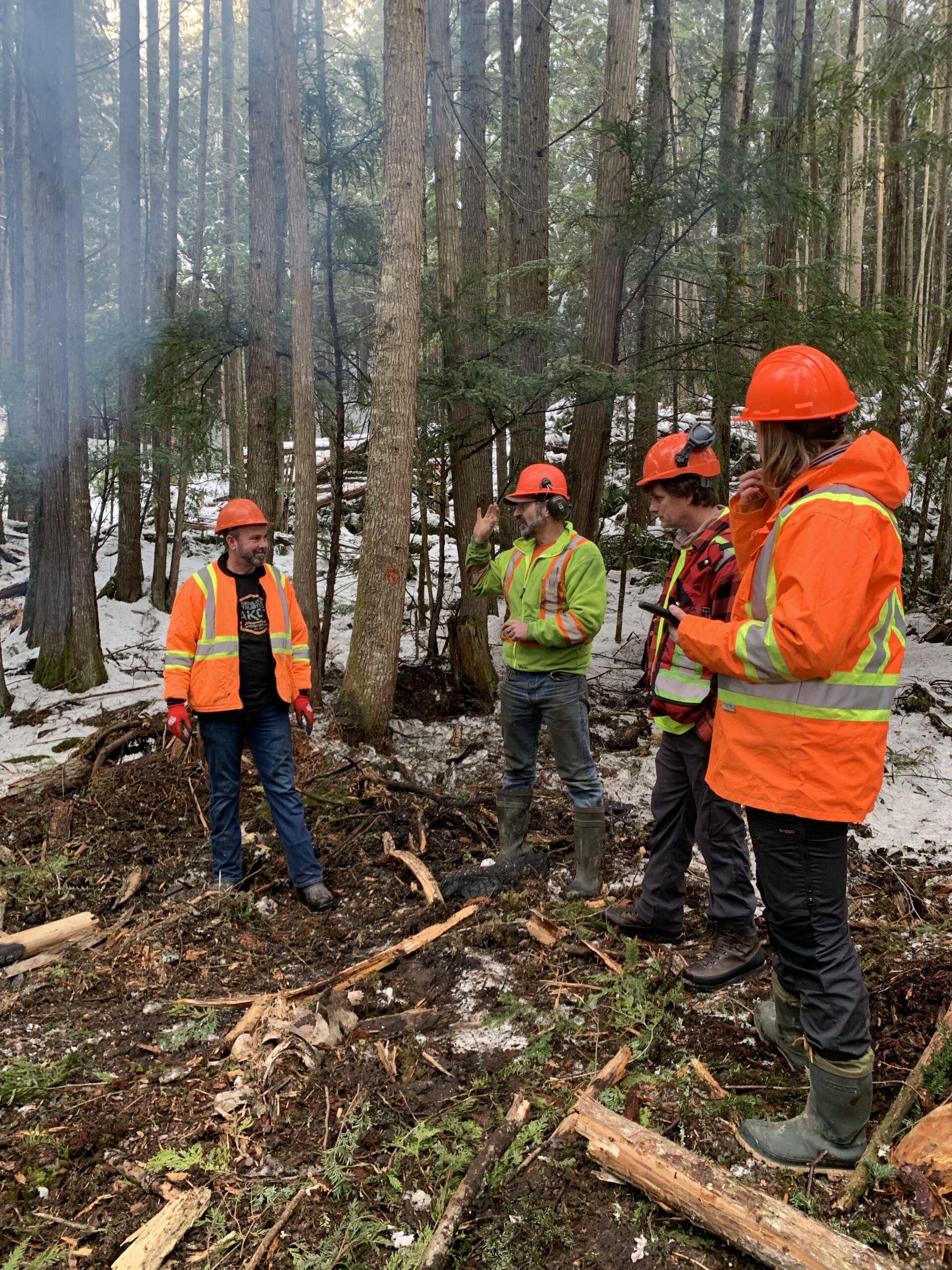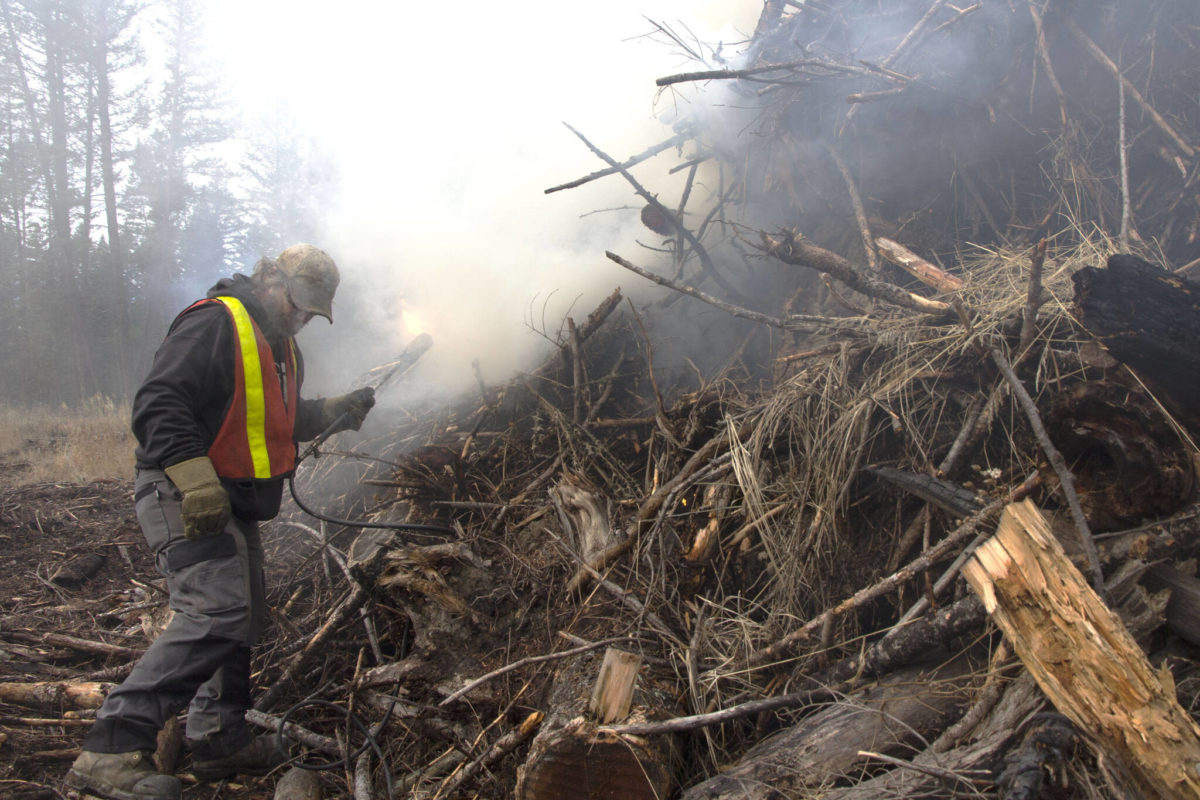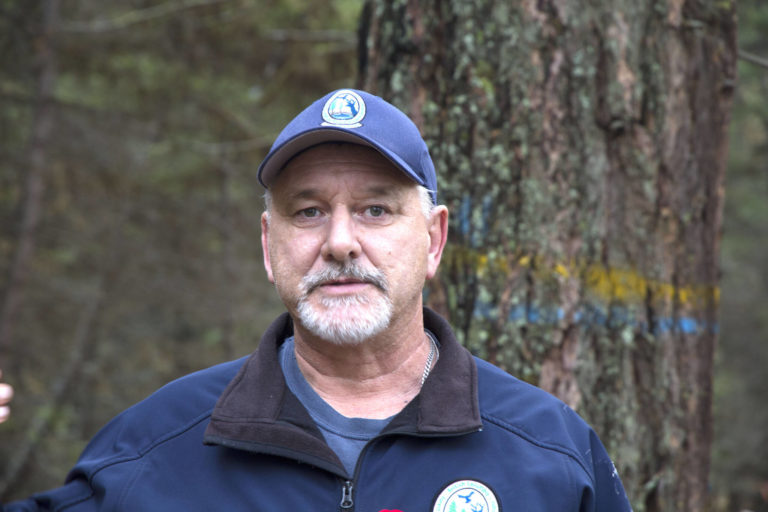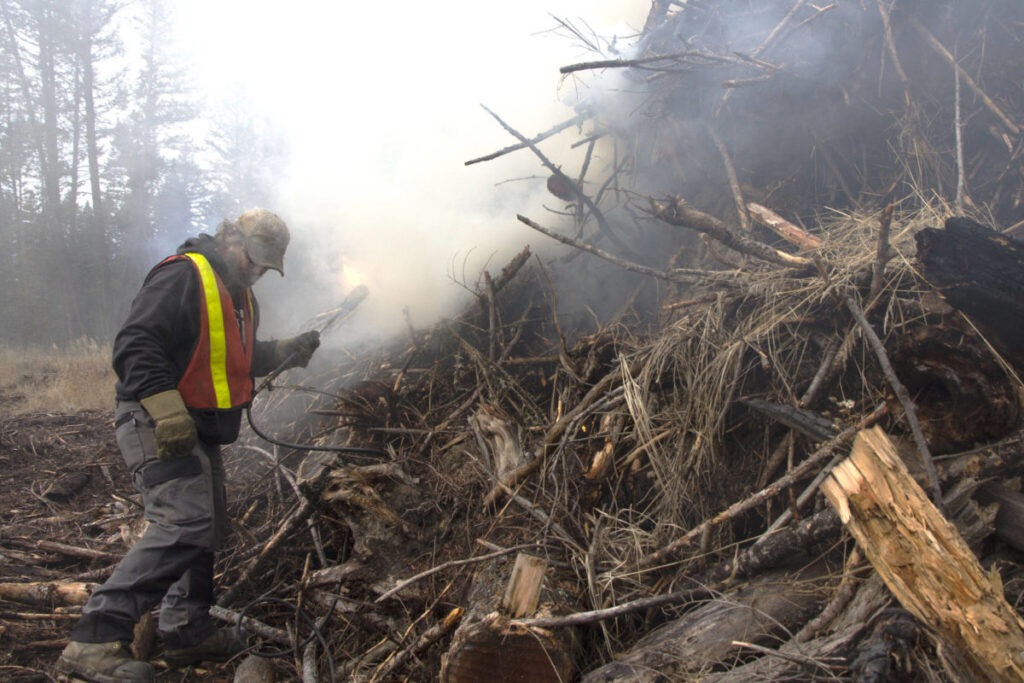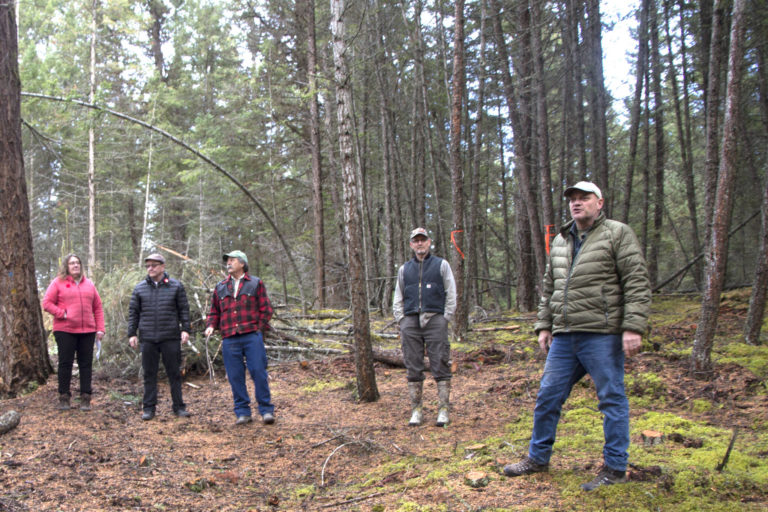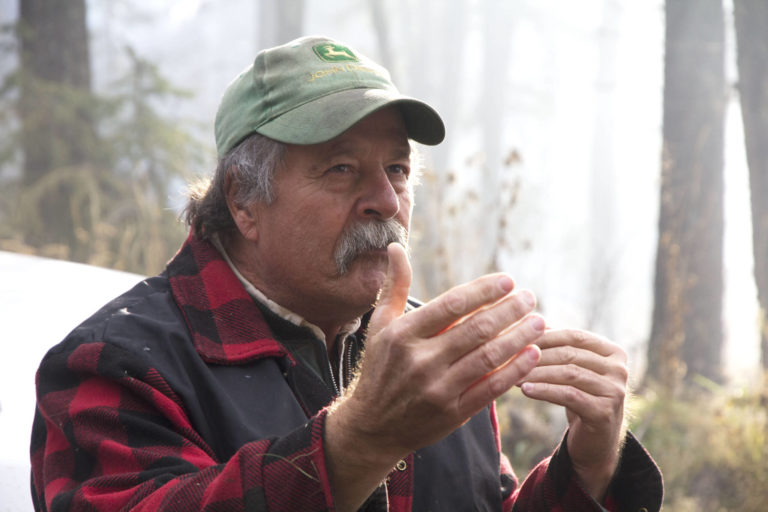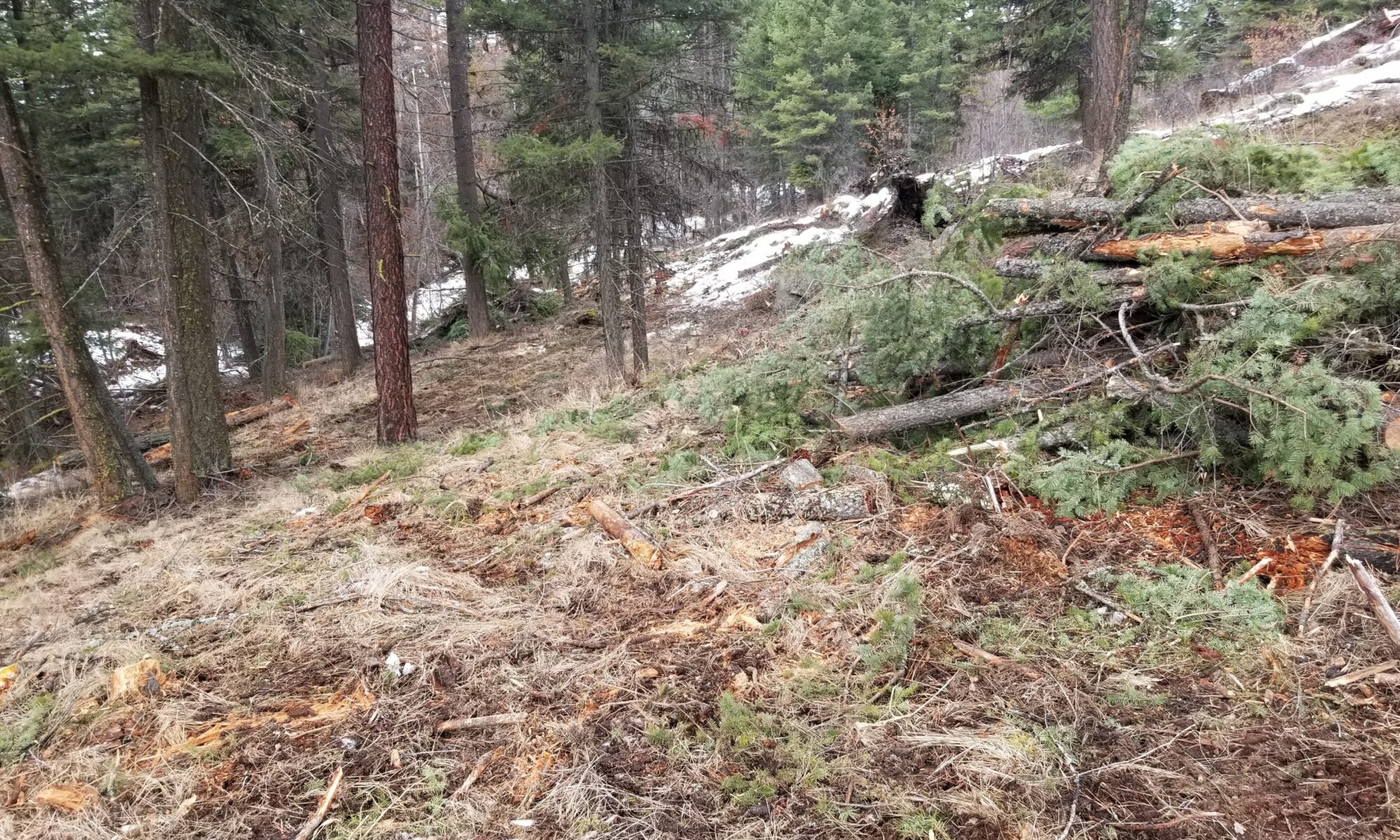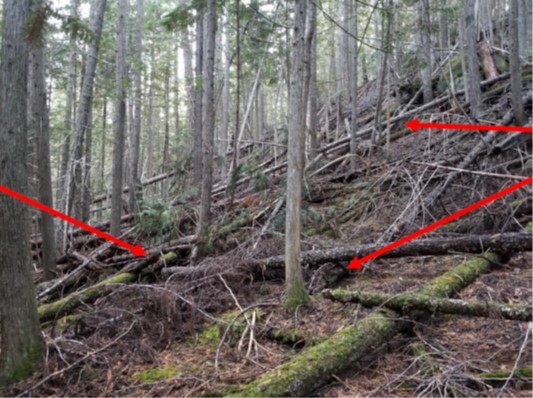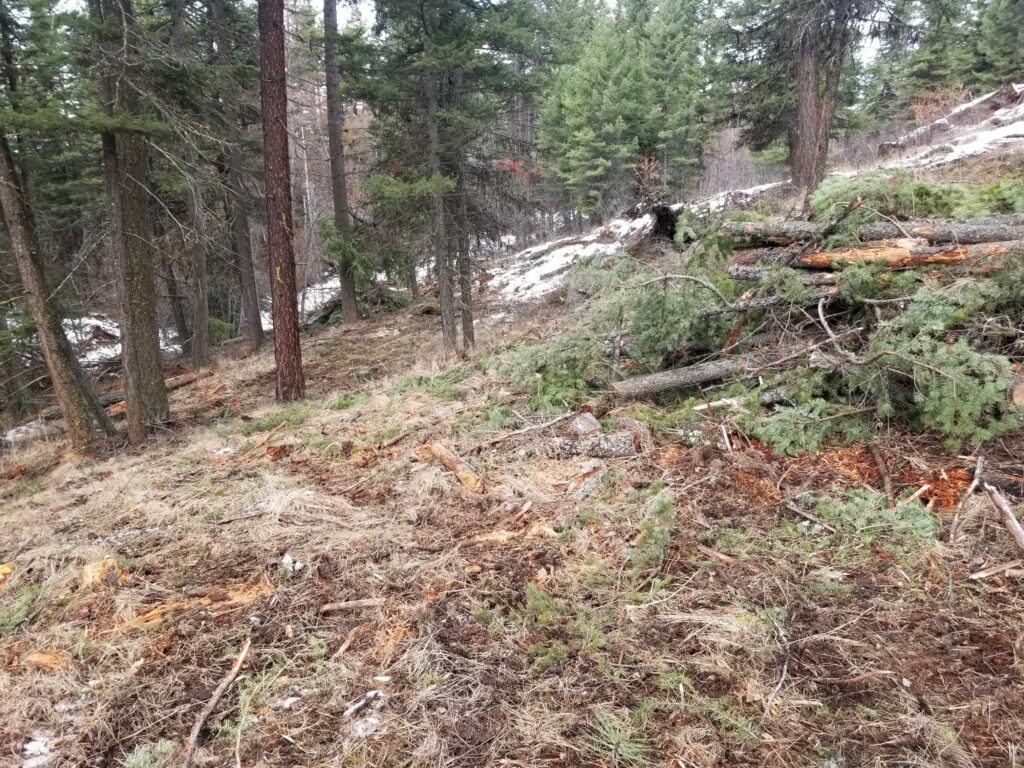Houston, B.C. – a project to reduce wildfire risk, establish a defensible fuel-free zone, and modify the amount of forest fuels has been successfully completed south of the District of Houston (the District) through Forest Enhancement Society of BC (FESBC) funding. The project took a large-scale effort of the District, BC Wildfire Service (BCWS), Houston’s Fire Chief, the Ministry of Forests, the Ministry of Environment and Climate Change Strategy, and several other stakeholders working together.
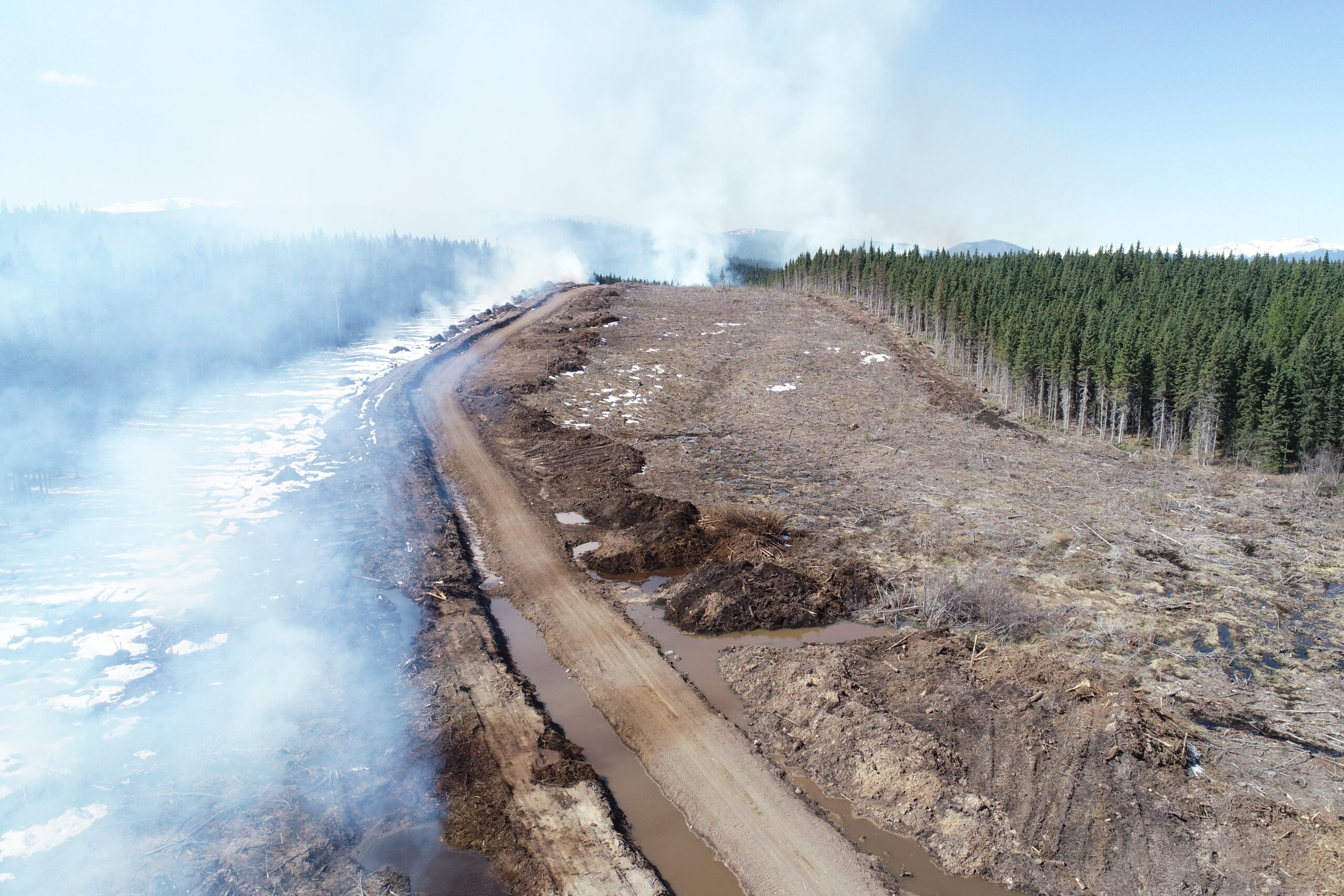
Leading the wildfire risk reduction project for the District was Pro-Tech Forest Resources Ltd. (Pro-Tech). The project’s goals were to reduce wildfire risks in areas identified in the 2018 Houston Community Wildfire Protection Plan (CWPP) and establish a defensible fuel-free zone for future fire personnel. The project in total covered a 9.7 km long, 1,202.1 hectares interface zone (which is equivalent to 2,247 football fields) along the southwest boundary of the District, collaborating closely with government and industry professionals. Despite delays caused by the COVID-19 pandemic, the project was completed successfully, including planting 330,000 trees in July 2022.
“The Forest Enhancement Society of BC is a proven partner in delivering projects on the ground that benefit communities, workers, and the health of our forests,” said Bruce Ralston, Minister of Forests. “We are building on this foundation with an additional investment of $50 million for the Society to expand funding for projects that increase access to fibre, reduce emissions from slash pile burning and reduce the risk to people from wildfire.”
In many ways, the project was in response to the Swiss Wildfire in 1983 that burned over 18,000 hectares of forest in Houston. The fire destroyed seven residences, damaged other important infrastructure, and significant suppression costs. “The Swiss Wildfire made the community aware that a wildfire threat was real and has very real consequences for people and communities. Homes were lost in that fire, and media reports indicated there was a real threat to the community. I believe that the fires in Kelowna in the summer of 2003, and the following provincial report that followed (Firestorm 2003) are what helped initiate the current risk reduction efforts in Houston,” noted Scott Rowsell, President, Pro-Tech Forest Resources.
In 2005, Pro-Tech prepared Houston’s first CWPP, and wildfire risk reduction work began soon after, led by Doug McRae, another local forestry professional. These activities were carried out in many high-risk zones around the community and included thinning and pruning trees, ground cleanup, and overstory removal. The Houston CWPP was updated a few years later using the latest science and research, and further identified the area between Buck Flats Road and the Morice Forest Service Road as a high-risk area for a wildfire due to the high combustibility and density of dead and dry vegetation. This zone to the South of the community became the project area where work occurred with FESBC funding.
A drone shot of the wildfire risk reduction work; A BCWS crew member undertaking wildfire risk reduction work;
Bottom photo: Thinned forest and cleaned forest floor alongside the highway, to protect the community of Houston from potential wildfires and ensure clear access for firefighters;
Photo credits: Pro-Tech Forest Resources.
Gord Pratt, Senior Manager, FESBC, said, “FESBC also recognized the risk to the community of Houston was pleased to provide funding that enabled this collaborative and innovated wildfire risk reduction project to be completed that will reduce the risk of wildfire to the community for many years to come.”
Rebecca Werner, project manager with Pro-Tech, managed the project with the overall goals of getting value for what was logged and reducing forest fuels that posed a hazard to the District. “Without collaboration, this project would not have been successful as it was. Without everyone believing in the project and assisting us in various ways, we would never have been able to complete the program. Fuel reduction is a team effort!” said Werner.
BCWS played a vital role with their extensive knowledge of fire behavior and specific training related to risk reduction and provided guidance on fuel modification plans and strategies to reduce risks. They also assisted in developing stocking standards, burn plans, and providing the professionals needed for large broadcast burns. BC Timber Sales and Canadian Forest Products prepared the ground for fuel modification activities and the Ministry of Forests provided guidance for special treatment recommendations for sensitive riparian zones.
In total, six prescribed burn plans were prepared by Derek Smith, project manager with Pro-Tech, then peer-reviewed by several layers of industry professionals. These plans allowed the effective use of large-scale broadcast burns during the project treatments and will assist in maintenance burns going forward. “Broadcast burning is by far the most impactful and cost-effective tool for wildfire risk reduction,” said Smith.
The project team also included Houston Fire Chief Jim Daigneault. “Chief Daigneault’s involvement throughout the project was very important,” noted Rowsell. “He was able to steer the project planning to fit with the overall goals for the community and provided us with open communication with the District throughout the project.”
Adaptation was as critical to the project as collaboration was, and flexibility was required. The original plan to reduce fire risk by promoting deciduous trees was revised mid-project due to new research showing an increased risk of ground fires. The project pivoted to a new wildfire stocking standard, and 380,000 pine and birch seedlings were planted. Treatment options balanced fuel reduction with the integrity of riparian zones, and economic interests were integrated into the fuel-free fire guard. “These large wildfire risk reduction projects are complicated with many moving parts, but ultimately they are well worth the efforts in the end,” noted Rowsell specifically for other Districts contemplating wildfire risk reduction projects in the future.
The project provided contract opportunities and employment, even through COVID-19 mandates for manual fuel modification crews, wildfire contract crews, project supervision, and mechanical fuel modification. It allowed a variety of training opportunities for the local provincial wildfire crews such as prescribed broadcast burning ignition, and hand ignition techniques, and new firefighters were exposed to water systems and mop-up, helicopter ignition, etc. The result is a significant area along the southern part of the community of Houston that has undergone wildfire risk reduction treatments.
FESBC would like to gratefully acknowledge the financial support of the Province of British Columbia through the Ministry of Forests.

